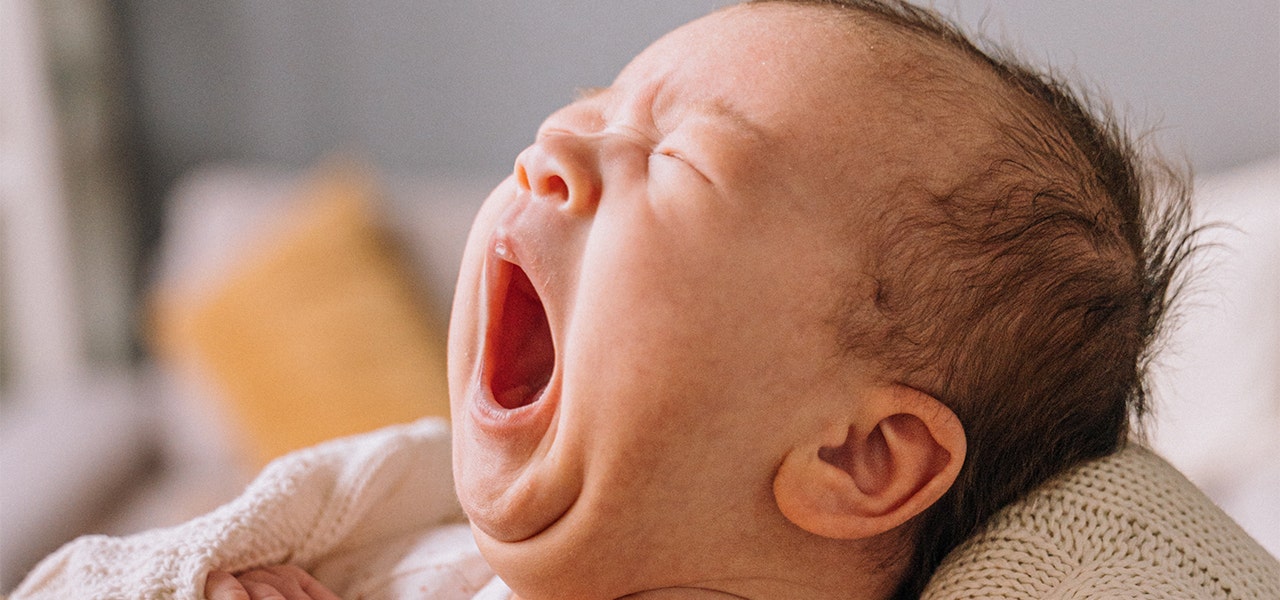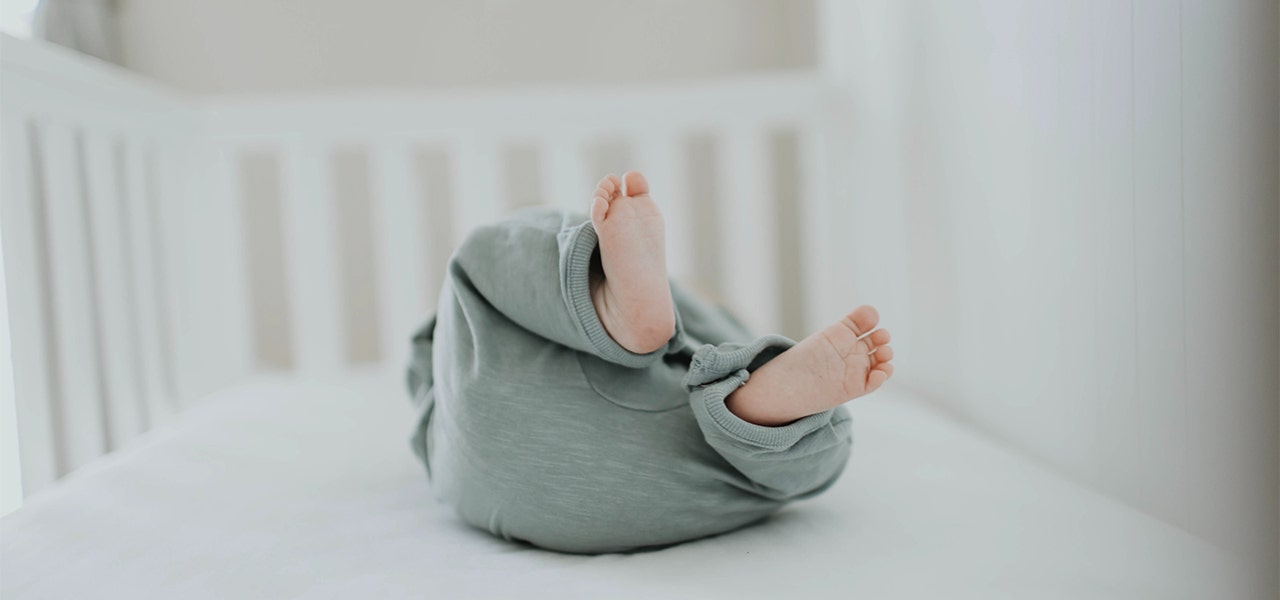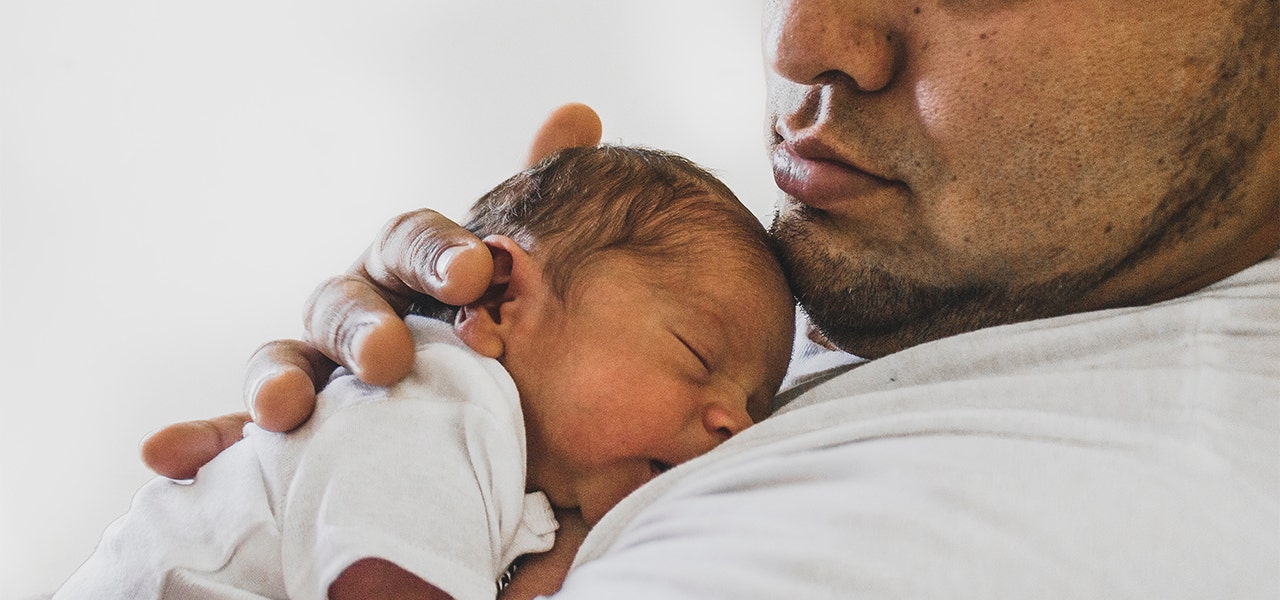Baby, it’s cold outside! As temperatures drop across the country, it’s a good time to consider that your precious little one’s ability to regulate body temperature is still maturing. What’s the ideal temperature for your baby’s room? How many layers should they wear when you go out?
We know, we know, there’s no shortage of things to keep track of and consider as a new parent – and we hate to add one more thing to your list. However, temperature regulation can have a big impact on your baby’s safety, comfort and well-being. You’ll want to make sure to keep your baby from getting too hot or too cold, whatever the weather.
At Naturepedic, we’ve spent the last 20 years researching and innovating ways to keep babies safe and comfortable. For example, that’s why we use soft, breathable organic cotton for our organic crib sheets and mattresses. We’re always happy to help lighten the load for new parents, so sit back and let us break it down for you. Here’s how to keep your baby warm in winter.
Why Newborn Temperature Regulation Matters


Newborn temperature regulation is a concern because newborns and infants have not yet developed the ability to self-regulate their internal temperature. In their first year of life, babies are more vulnerable to cold conditions and more susceptible to viruses and infections. Newborns lose heat much faster than adults do and lack the ability to increase their heat by shivering.
Additionally, newborn babies don’t have the body fat needed to warm themselves back up once they become cold. This is why it becomes the parent’s job to regulate a new baby’s temperature for them – especially because babies can’t tell us that they’re too cold or hot.
Signs Baby Is Too Cold or Too Warm
Sure, your baby can’t tell you if they are too warm or cold with words. But, your little one can give you some specific indications that they’re not at a comfortable temperature. Warning signs you never want to ignore include:
- Your baby’s hands, feet or face appearing pale, blotchy or a purplish red
- Lethargy/non-responsiveness
- Blue lips or face
If you notice any of these symptoms, it’s a good idea to try some skin-to-skin contact, snuggling together under a blanket on a comfy chair. If your baby continues to be lethargic, consult your pediatrician.
In less severe instances, your baby’s hands, feet and nape of the neck may feel cold to the touch. They may also be telling you they are too cold by:
- Crying less
- Acting fussier
- Not feeding as much
- Sneezing
Signs your baby may be too warm include:
- Sweating
- Rashes
- Rapid breathing
- Flushed cheeks
- Fever
- Restlessness
Identify the Ideal Temperature for Baby’s Room


Keeping the temperature of your baby’s room between 68 and 72 degrees Fahrenheit is generally a well-tolerated range for summer through winter. However, if you personally feel the room is too hot or too cold, it’s likely your baby will too. A room (and baby) that are too hot can increase your baby’s risk of SIDS.
For peace of mind, try using a portable indoor thermometer to keep track of how hot or cold your baby’s room is if their nursery doesn’t already have a thermostat. While it’s not recommended to incorporate additional AC units or space heaters, the use of a gentle fan can help circulate oxygen in the nursery and help your little one get better airflow, as long as it’s not blowing directly on them.
Get more tips on setting up your baby’s nursery for safe sleep here.
Does Baby Need a Blanket at Night?
For your baby’s safety, it’s best to avoid any soft bedding or blankets in the crib since these can pose a suffocation risk. Just dress baby in layers including a snug onesie and sleep suit with feet (organic cotton is best!) to keep your little one warm from top to toe. However, in the colder winter months, it’s possible your baby may need a little extra warmth. You can try using a “sleep sack,” a wearable infant sleeping bag that acts as a safer alternative to a blanket.
Best Materials for Baby Bedding
New parents should avoid quilted fabrics or duvets for their baby’s bedding – fitted crib sheets only! The best materials are simple, lightweight and breathable fabrics that are made without any chemical treatments or harsh dyes. We recommend sticking with organic cotton sheets and waterproof mattress protectors that are certified to the Global Organic Textile (GOTS) standard.
Choosing organic options means protecting your baby from harmful chemicals, flame retardants, VOCs, GMOs and other scary stuff you don’t want your sweet little bundle sleeping with. Because babies are still growing, they are more susceptible to harmful toxins found in non-organic bedding – conventional mattresses, too. Breathing in these harmful substances can interfere with the restorative nature of their sleep and lead to health problems.
5 Extra Temperature Tips for Your Newborn


We know how challenging being a new parent can be, but you’re doing great! You’ve already come this far. Now, here are just a few extra temperature tips for you and your new addition:
1. Wear Your Baby
Wearing your baby in a swaddle or carrier is a great way to add extra warmth from your own body heat to keep them cozy when you take them outside in cold weather. Just make sure their face is not pressed against your chest!
2. No Coat in the Car
Although it’s cold outside, it’s important to make sure you never put your baby in their car seat with their coat still on. Keeping their coat on in the car allows for too much material and space between them and the car seat. Instead, try using a light blanket in the car or pre-warming your vehicle.
3. Dress Your Baby in Layers
Dressing your baby in layers with breathable fabrics, like cotton and muslin, can help keep them warm and will allow you to adjust to their needs or changing environment. In general, start by dressing Baby in one more layer than you would wear.
4. Be Mindful of Strollers
Most strollers have covers that are specially fitted to that brand to allow for proper air circulation. Although it may seem like a good idea to throw an additional blanket over the stroller, this is often unnecessary and could compromise the air flow inside for your baby. Also, if you can, try walking against the wind when baby is in the stroller.
5. Share a Room
Perhaps the best way to closely monitor your baby’s temperature is to share a room with them – at least for the first six months. This can help you get a better idea of how their temperature runs while they sleep. Consider moving their crib or bassinet into your room and placing it near your bed.
Congratulations on becoming a new parent and on your precious newborn! Although it can be a confusing time and you may find yourself wishing your baby came with instructions, we hope this guide can be a helpful resource to you and your baby this winter.
Have more baby sleep safety questions? Check out this blog post: 7 Crib Mattress Safety Questions – Answered!
 BABY
BABY  KIDS
KIDS  ADULT
ADULT  LEARN
LEARN  STORES
STORES 